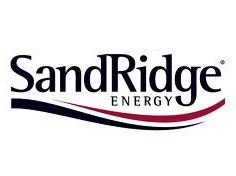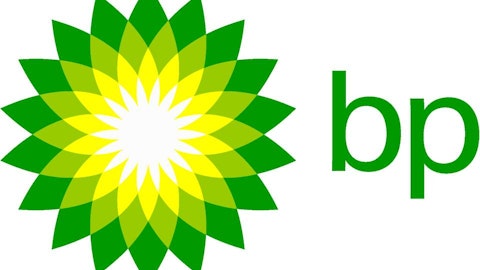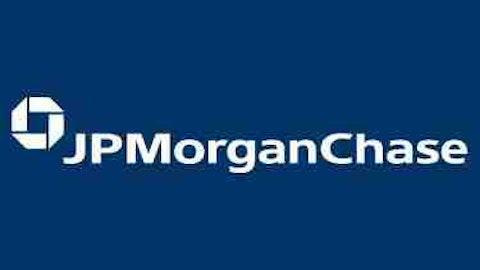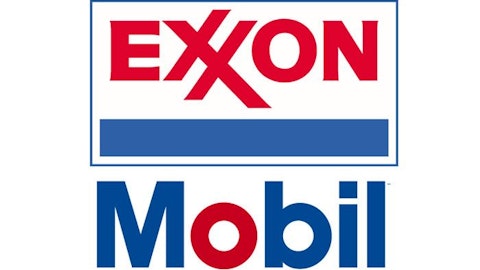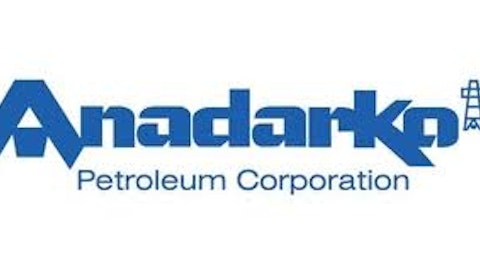Modern finance explains that investors are compensated for increased risk with a possible increase in returns. A look at the small upstream firm SandRidge Energy Inc. (NYSE:SD) shows just how true this is. SandRidge Energy Inc. (NYSE:SD)’s CEO, Tom Ward, had a number of side interests that potentially conflicted with SandRidge. The company’s stock price and earnings have behaved poorly and yet, Tom Ward continues to walk away with multi-million dollar salaries.
SD Total Return Price data by YCharts
SandRidge’s economics
In 2012, SandRidge Energy Inc. (NYSE:SD) had production expenses of $14.31 per barrel of oil equivalent (boe). Given that the majority of the firm’s production is highly priced crude oil, there is little reason that the company should be posting such low earnings. It has a five year revenue growth rate 24.71% and yet, it has posted losses in seven of the last 12 quarters. Tom Ward’s $116 million paycheck since 2007 shows where a large portion of these profits have been going. He has also helped saddle the company up with a substantial total debt to equity ratio of 1.69.
Steep declines in SandRidge’s trusts
SandRidge Energy Inc. (NYSE:SD) has spun off a number of its assets into separate trusts, and investors have been surprised with declining distributions. It is easy to forget that horizontal wells’ production rates can fall off quite steeply. Falling production also hurts SandRidge Energy Inc. (NYSE:SD) as it remains the owner of all of the subordination units of the trusts.
SandRidge Mississippian Trust I (NYSE:SDT) has been around for a little more than a year. In that time, it has seen its dividend fall from $1.07 per share to $0.65 per share. In just seven quarters, its dividend has fallen 40%. Due to overly optimistic projections, SandRidge was recently forced to take a hit as its subordinated units distribution was decreased to $0.50 per unit. Based on current analyst projected 2014 earnings, investors can pick up shares in the trust at forward price to earnings (P/E) ratio of around 7.
With SandRidge drilling more wells SandRidge Mississippian Trust II (NYSE:SDR) has increased its dividend from $0.27 in Q2, 2012 to $0.53 in Q1, 2013. SandRidge is expected to keep drilling new wells for the trust until 2016. Based on 2014 expected earnings, the trust is trading at a forward P/E ratio around 6. The second trust warrants a lower P/E ratio than the first trust, because the second trust’s earnings are 70% derived from cheap natural gas as opposed to 59% for the first trust.
Don’t ignore history
CHK Total Return Price data by YCharts
Chesapeake Energy Corporation (NYSE:CHK) has a similar story to SandRidge. Chesapeake Energy Corporation (NYSE:CHK) had a fiscally liberal CEO who ultimately drove the company to the edge of bankruptcy. Also, the CEO’s ability to purchase partial interests in Chesapeake Energy Corporation (NYSE:CHK)’s wells created questionable conflicts of interest. Chesapeake’s famous purchase of Aubrey McClendon’s personal map collection only made his relation with the company more questionable. Tom Ward worked with Chesapeake Energy Corporation (NYSE:CHK) for an extended period of time before starting SandRidge, and the similarities between the companies should not be too surprising.
Chesapeake Energy Corporation (NYSE:CHK)’s share price has continued to suffer. Low natural gas prices and expensive acreage is not a profitable combination. With a total debt to equity ratio of 1.06, a return on investment (ROI) of (5.2)%, and a profit margin of (11.4)%, there are many better places to park your funds.
Sometimes, bigger is better
Exxon Mobil Corporation (NYSE:XOM) isn’t very attractive and its large size makes replacing reserves difficult, but the company gets the job done. It still benefits from its legacy assets and shows why investors find it easier to trust in large multinationals. The company enjoys a very low cost of production and its refining assets help to even out its earnings. In 2011, its average production costs per boe in the U.S. were $11.14 while its global production costs were only $12.33 per boe.
Exxon Mobil Corporation (NYSE:XOM) has a consistent history of profitability, and its leaders have created a steady flow of dividends that investors can depend on. While it can be attractive to chase large returns and bet on corporate turnarounds, ExxonMobil provides a stable place to park your funds. Unlike SandRidge, ExxonMobil offers a fat ROI of 32.9% and almost no debt with a total debt to equity ratio of 0.08. At a current P/E ratio of 9.8, this firm is a far superior investment to SandRidge.
Conclusion
Small companies offer more growth and more risk. SandRidge is still dealing with its questionable CEO. Until its corporate governance issues are settled, it is best to leave the company alone. Its Mississippian trusts are an option for income investors, but it is best to purchase them with a large margin of safety due to high declines in production rates.
Chesapeake went through a similar nightmare as SandRidge, and its profits are still unsteady. For long-term investors looking for steady earnings and little stress, it is best to look at ExxonMobil.
Joshua Bondy has no position in any stocks mentioned. The Motley Fool owns shares of SANDRIDGE MISSISSIPPIAN TR II COM and has the following options: Long Jan 2014 $20 Calls on Chesapeake Energy, Long Jan 2014 $30 Calls on Chesapeake Energy, and Short Jan 2014 $15 Puts on Chesapeake Energy.
The article Investing in Small Energy Companies Is Dangerous originally appeared on Fool.com and is written by Joshua Bondy.
Joshua is a member of The Motley Fool Blog Network — entries represent the personal opinion of the blogger and are not formally edited.
Copyright © 1995 – 2013 The Motley Fool, LLC. All rights reserved. The Motley Fool has a disclosure policy.

